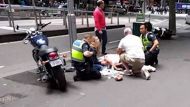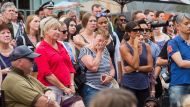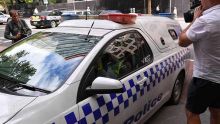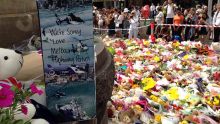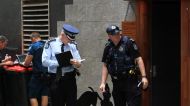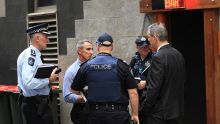George Braitberg had been driving home from his usual shift at the Royal Melbourne Hospital when a phone call hit him like a shot of adrenaline.
He was told to prepare for a "mass casualty" event.
More National News Videos
Surveying Bourke St minutes after car chase
YouTube user Gerard Hindle records on his phone as he walks down Bourke Street shortly after the police chase in Melbourne's CBD Friday.
Something had happened in the city. There would be many injured, including a shooting victim. No more details available.
As the hospital's director of emergency medicine, Professor Braitberg needed to make sure the emergency department was ready for it.
He raced back to the hospital, pulled out a whiteboard – one normally used during disasters – and got to work, leading a team of doctors, nurses and hospital staff as the first patient arrived at their door.
All eight trauma rooms had been cleared by then, along with the operating theatre. Nurses and doctors were staying late, coming in early, or arriving from other departments.
Between 2.16pm and 3.30pm on Friday the hospital would treat 11 people, three in a critical condition, for broken bones, internal bleeding and head injuries.
It was the busiest emergency room in the city and there were so many doctors and nurses trying to help out, Prof Braitberg had to start turning people away.
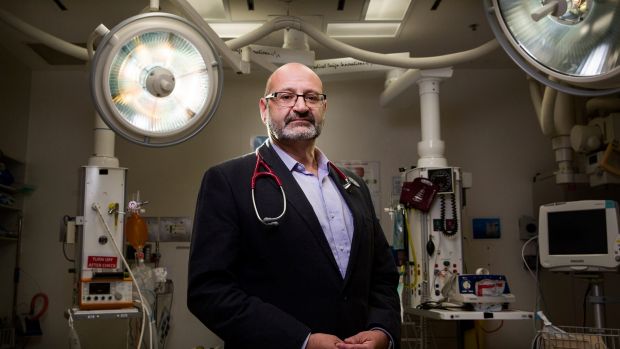
"Watching it with trained eyes, although it was really busy and looked chaotic, it was absolutely beautifully performed. It was almost like an orchestra," he said.
"The larger the orchestra, the more potential there is of making an error, but the greater the music, the greater the sound, and I think that's what we were doing. They just did an awesome job."
His staff were at the forefront of treating those injured in the Bourke Street attack after a maroon sedan allegedly driven by Dimitrious "Jimmy" Gargasoulas mowed down pedestrians in the CBD, yet they knew very little about what had gone on.
It wasn't until hours later when Prof Braitberg realised the police shooting and the injured pedestrians were linked. That meant an accused killer was among the injured.
Prof Braitberg said staff are trained to deal with such scenarios. He thought of the Port Arthur Massacre and how the victims and the shooter were sent to the same hospital. Or hospitals in Israel, when terrorists and their victims are often treated by the same people.
"You just have to leave it at the door," he said. "You're dealing with the injuries and what happens as a consequence, and who did what, is a question of reflection for later."
He expects his staff to give any accused killer the same level of care as a victim, though few have been put in such a scenario before, he said.
"You do as much, mentally, as you can to divorce yourself from the way the patient got injured and concentrate on treating the patient's injuries," he said.
"I've got no concern, no sense, that we wouldn't just get on and do what we needed to do."
And the victims would have no idea the alleged culprit was being treated at the same hospital, he said, because each trauma room is separated by a thick wall.
Anyone under police guard is also kept in a different section away from other patients.
Yet, being so close to such a tragedy has an impact on hospital staff.
Prof Braitberg spoke with his colleagues on Saturday morning and is planning another de-briefing next week.
Hospital staff are in a period of "psychological deflation" and exhaustion, just like any other emergency responder, he said.
"You work on that adrenaline," he said. "Once it's over, you start to think about the human loss, and the senseless human loss that occurred," he said.
"That's partly because we get more information and partly because all that adrenaline is gone."

